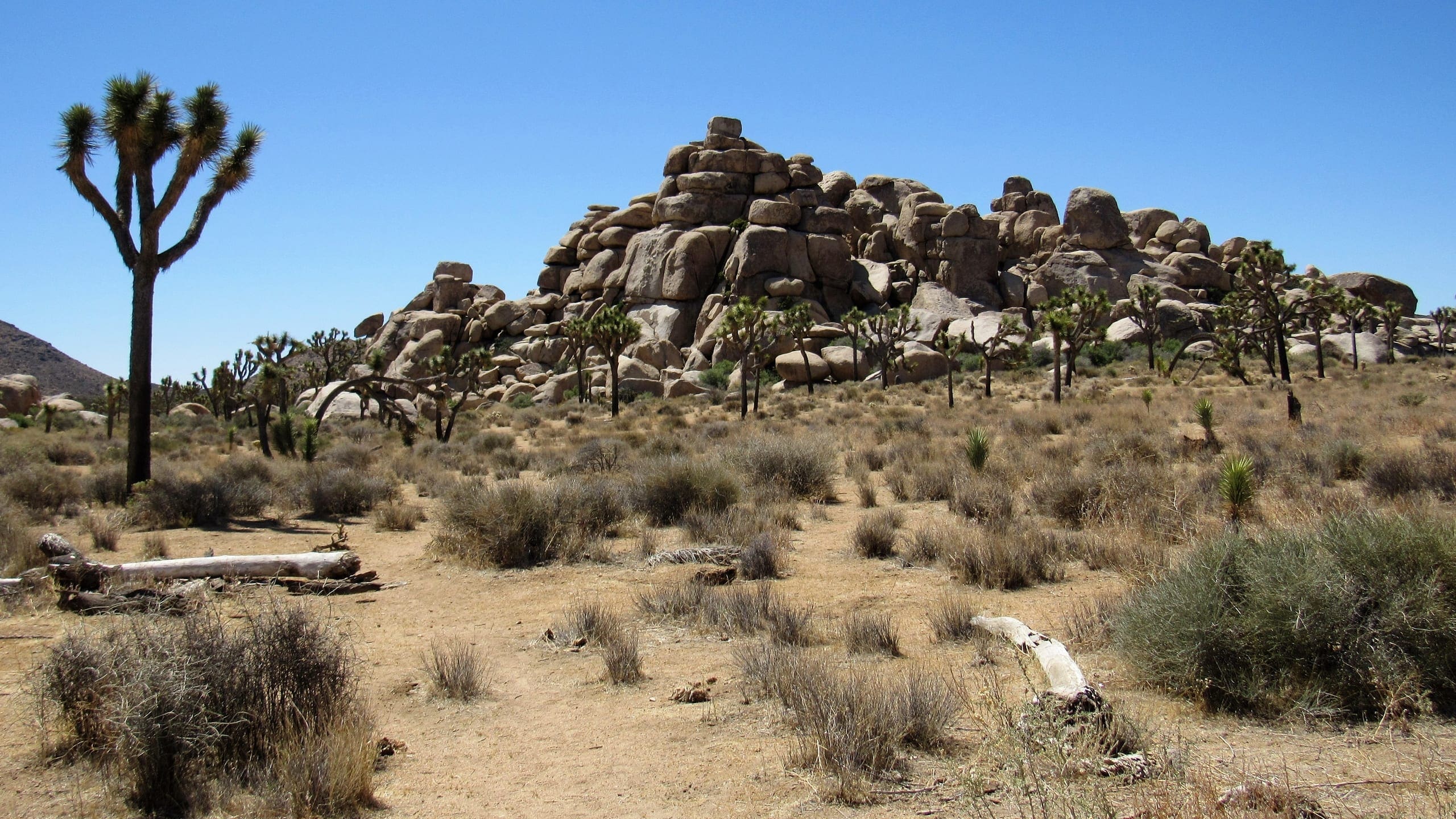About Joshua Tree National Park
Joshua Tree National Park lies along the east-west transverse ranges of the Little San Bernardino Mountains in southern California. The southern boundary of the park follows the base of these mountains along the northern edge of the Coachella Valley; the northern boundary is defined by the Morongo Basin. Ecologically, Joshua Tree National Park lies at the convergence of two deserts—two large ecosystems whose characteristics are determined primarily by elevation. Below 3,000 feet, the Colorado Desert encompasses the eastern part of the park and features natural gardens of creosote bush, ocotillo, and cholla cactus. The special habitat of the Joshua tree is found in the higher, more moist, and slightly cooler Mojave Desert. In addition to Joshua tree forests, the western part of the park also includes some of the most interesting geologic displays found in California’s deserts. The park includes five fan palm oases, which are the few areas where surface water occurs naturally.
The park lands include a rich and diverse cultural history. Human occupation dates to the early Holocene period, with what is known as Pinto culture; human occupation continues throughout the historical era with tribes known today as Cahuilla, Chemehuevi, Mojave, and Serrano. In the last quarter of the 19th century, European American surveyors, cattlemen, miners, and homesteaders began to arrive and, alongside native peoples, created a set of enduring social and cultural legacies for these lands.
On August 10, 1936, President Franklin D. Roosevelt established Joshua Tree National Monument as a unit of the national park system through a Presidential Proclamation. After two boundary changes in 1950 and 1961, Congress designated 429,690 acres of the monument as wilderness and 37,550 acres as potential wilderness in 1976. Then, in 1984, the monument was designated as part of a biosphere reserve system that included Joshua Tree and Death Valley National Monuments, Anza Borrego Desert State Park, Santa Rosa Mountains Wildlife Management Area, and Deep Canyon Research Center. In 1994, the California Desert Protection Act added 234,000 acres (including 163,000 acres of new wilderness) to the park, and redesignated the area as Joshua Tree National Park.
The park boundary currently contains 772,676 acres in federal ownership and 19,834 acres of nonfederal lands. Of these lands, 595,370 acres are designated as wilderness and 70,557 acres of potential wilderness. The park lies within both San Bernardino and Riverside counties approximately 100 miles from the Los Angeles metropolitan area—more than 18 million people live within a three-hour drive of the park. The natural desert expanse of the park provides ideal conditions for campers, photographers, star gazers, naturalists, as well as anyone seeking space for quiet introspection, exploration, or outdoor learning. In addition, the extensive granite rock outcrops, boulder piles, desert mountain ranges, and canyons create a world-class destination for rock climbers, as well as hundreds of miles of scenic trails for hikers and equestrians.
Given its location along a transition line between two desert ecosystems, the park is home to a fascinating diversity of desert plants and animals. More than 900 species of flowering plants have been identified, with the most distinctive being the ocotillo, the cholla, and the Joshua tree. The park also preserves more native palm oases than any other unit in the national park system. These oases support vegetation and wildlife distinct from other species found in the park. The park contains highly diverse fauna. More than 250 species of birds have been recorded at Joshua Tree National Park, as have many unique species of reptiles, amphibians, mammals, and invertebrates. Some examples include the desert tortoise, the California treefrog, the desert bighorn sheep, and a species of tarantula that is found only in the Joshua tree plant community.
Joshua Tree National Park protects numerous archeological sites associated with the Pinto Culture, one of the earliest prehistoric cultures found in the California desert (7,000–10,000 years old). The park preserves sites and materials associated with at least four overlapping ethnographic native cultures—the Cahuilla, Serrano, Chemehuevi, and Mojave Indians. Other historic sites preserve information on the history of the processing of gold ore, cattle ranching, rustling, and homesteading of the southwestern deserts.
Source: Foundation Document – Joshua Tree National Park
Fast Facts:
| Date the Park was Established: | October 31, 1994 |
| Park Area (as of 2019): | 795,155.85 acres (3,217.9 km2) |
| Recreational Visitors (2018 Total): | 2,942,382 visitors |



